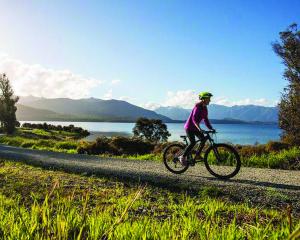In 2019, the Ministry of Education announced its Sustainability Contestable Fund.
Schools could apply for funding to help reduce energy consumption or replace non-renewable energy sources.
Sunergy Solar managing director Andrew Wells said Halfmoon Bay School was one of 778 schools that applied and was one of the 94 successful schools.
It was given just under $50,000 for a solar power system and the installation took place at the same time as other renovations.
Sixty panels were placed on its roof, and the system has a hybrid inverter with an 11kWh battery.
“In the two months we’ve had this system operating, we’ve generated enough power to run the school entirely,” Mr Wells said.
Power not used is banked in the battery, and the surplus is given back to the town’s power supply.

This was especially significant for Stewart Island, given the community’s power is provided by diesel generators.
“They burn about 360,000 litres of diesel a year to provide that electricity.
“Because of that, electricity is very expensive here, at around 60c a kWh.”
The system would save the school about $8000 a year, and reduce diesel consumption by 5000 litres a year.
Data had shown — possibly a suprise to some — the island’s climate was fantastic for solar power, he said.
Energy and resources minister Dr Megan Woods attended a celebration at the school yesterday.
It was a good opportunity, not just for the school but for the whole of the island, she said.
“Across New Zealand we’re looking for ways to decarbonise our energy and electricity systems, remote community’s that are reliant on fossil fuels obviously have the bigger challenge.”
The Government would work with the island’s community to figure out what a decarbonised future would look like, she said.
Ideas such as a wind farm had been pitched but nothing had yet been settled on.
The future of renewable energy was not one option or another, however.
Instead, she said it was about bringing different forms of generation together.
The pride in the children for their kura was obvious to Dr Woods, not only for helping their immediate family but also for providing energy resilience to the island.
School principal Kath Johnson explained the new system was important for reducing its electricity cost as well as its reliance on fossil fuels.
Installed in the April school holidays, the new power source fitted well with the school curriculum, particularly with the degree of environmental education involved.
“It’s a win-win all the way around.”











